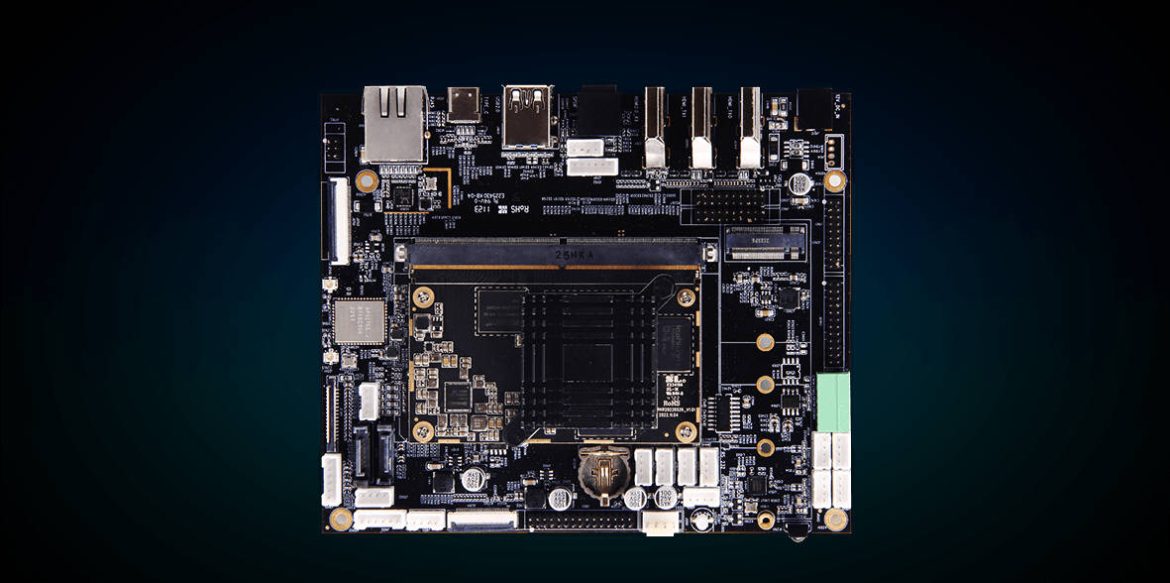Imagine all the parts that make your computer or smartphone work. Usually, these are scattered on a big board inside your device. In an SoC, all these essential parts are squeezed onto a single, tiny chip! This makes everything smaller, faster, and more energy-efficient. SoCs are like mini-cities with everything you need for the device to work—CPU, memory, and even the graphics stuff—all in one place.
They’re the secret sauce in making gadgets like smartphones, smartwatches, and even some TVs super slim and powerful. It’s amazing how much tech can fit on one small chip! You can get a crystal clear idea on SoCs here at https://www.geniatech.com/product/db3588/
Brief History
Back in the day, computers were huge, filling entire rooms! Then, in the ’80s and ’90s, we started to get better at shrinking tech. But things really took off in the 2000s with the rise of SoC, or “System on a Chip.” Before, a computer needed separate pieces for the brain (CPU), memory, and more.
Each piece had its own space. But SoC crammed all those into one chip, like putting a whole band into a single musical instrument! Now, we’ve got super small and powerful smartphones, smartwatches, and even smart fridges. SoC technology made our favorite gadgets way cooler and way smaller!
The Technical Magic Behind SoCs
Imagine you’ve got a bunch of musicians—drummers, guitarists, and singers—all doing their own thing. To make real music, they’ve got to come together. That’s what SoCs, or “Systems on a Chip,” are like. They take the key players in a computer—like the brain (CPU), memory (RAM), and the artist (graphics)—and put them all on one chip, a tiny piece of silicon no bigger than a coin.
The magic happens when all these pieces work super close together. They can pass the ‘musical notes’ (or data) to each other super-fast, like instant messaging for computers. Plus, being on one chip means less energy is wasted, so your phone battery lasts longer.
SoCs are like a mini tech party, where everyone’s invited and works well together. They’re the reason your phone fits in your pocket but still plays amazing games, takes great photos, and basically acts like a mini-computer!
Key Advantages of SoC Technology
- Tiny Size: Imagine you could take a whole orchestra and fit it into a jukebox. That’s what SoC does for tech. All the parts that usually sprawl across a computer board are packed onto one small chip. This helps make our devices super slim and pocket-friendly.
- Speedy Gonzales: Because all the bits are so close together on the same chip, they can chat really fast. It’s like having all your best friends in one room; you don’t have to shout across the street to talk!
- Battery Saver: SoC is the hero your phone battery didn’t know it needed. With fewer parts and shorter distances for data to travel, SoCs are like a Prius for your electronics—super energy-efficient!
- Cheaper to Make: When everything you need is on one chip, you cut down on materials and complicated manufacturing steps. This makes SoCs cheaper to produce, and sometimes those savings get passed on to us, the customers.
- Easy to Upgrade: Need a faster phone or a better smartwatch? With SoCs, making improvements is like giving your car a tune-up rather than building a new one from scratch. This means quicker, better gadgets for all of us.
Conclusion
In summary, SoC technology has revolutionized how we interact with devices. It brings efficiency, affordability, and speed to both the end-users and manufacturers. With SoC’s pivotal role in IoT, its potential seems limitless. The future of technology is indeed smaller, faster, and more efficient, thanks to System on Chip.
